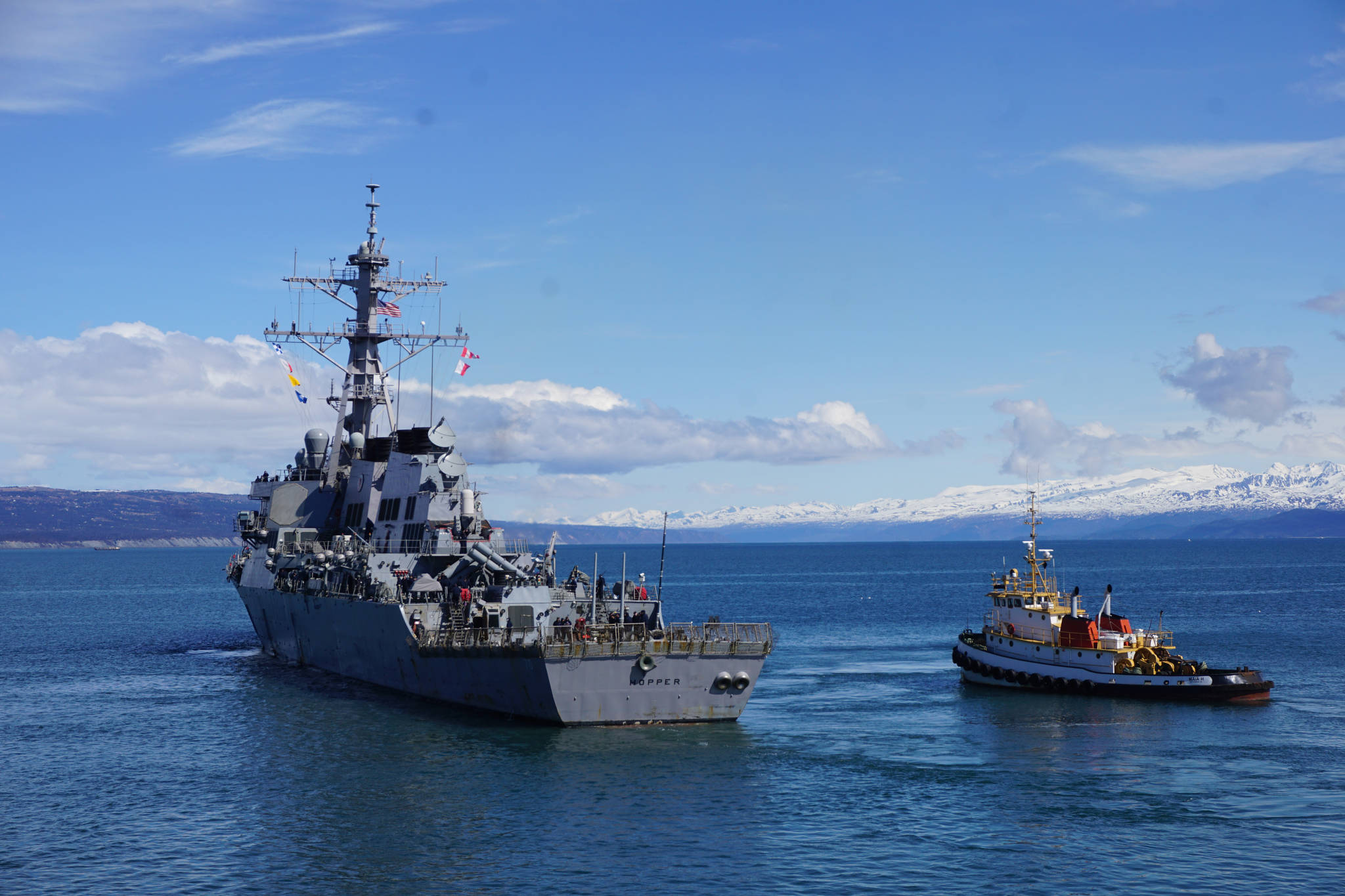The organizers of a military exercise held in Alaska this summer took efforts to minimize impact to marine wildlife, U.S. Navy officials said.
Northern Edge 2017, a Pacific Command-sponsored joint training exercise with the U.S. Coast Guard, U.S. Air Force, U.S. Army and U.S. Marine Corps, was held in the Gulf of Alaska and elsewhere in the state from May 1-12. For part of that time, the USS Hopper, an Arleigh-Burke class destroyer, docked in Homer.
At the time, the ship was greeted by fans, supporters and those protesting the timing of the military exercise while whale migrations were ongoing. Two representatives of the exercise presented a recap of the drill’s events for the Homer City Council at its Aug. 14 meeting. Impacts to marine life were kept to a minimum, they said.
“No explosives were used,” said Chip Johnson, a marine biologist with the Navy. “That eliminates that potential risk to any species.”
The exercise was approved to go on longer than its 12 days, he said. The exercise’s organizers worked with the National Marine Fisheries Service and Alaska Native tribes to address concerns about species that are being fished for, and adjusted the exercise accordingly, Johnson said.
For example, Johnson said the amount of the sonar used in the exercise was limited.
“Sonar in and of itself is really only heard by a few species,” he said, citing fish in the herring family.
Most other species of fish or mammals were unable to hear the frequency of sonar that was used during Northern Edge 2017, he said.
“Again, if I was to do a graph … of how much sonar was used, on one side I’d put a bar of what was authorized,” Johnson said. “On the other side I’d put a bar of what was actually used. It would probably be so small you probably could not see (it.)”
There were no indications of strain on wildlife outside of the normal things that happen in biological systems, Johnson said.
Tim Croft, director of joint training and exercises at Alaskan Command, said about $28 million was spent in Alaska on the exercise. It involved 160 aircraft that made 1,700 take-offs over a two-week period and logged about 4,000 flight hours. Approximately 6,000 personnel worked the exercise both in Alaska and in the Lower 48, Croft said.
The objectives of Northern Edge were to get multiple military services operating together and communicating, Croft said. Often, the services practice things separately, so it’s important that aircraft be able to talk with ships, etc.
The Hopper was one of two Navy destroyers used in Northern Edge. The other went to Juneau. During Hopper’s visit to Homer, more than 280 people took part in the exercise there, over two and half days, Croft said.
Each exercise is going to vary, usually depending on what’s going on in the world, Johnson said.
Hopper was named after female computer scientist Rear Admiral Grace Hopper, who was also known as “Amazing Grace.” She served in the Navy computing section during World War II, and the Naval Reserves until age 80.
Hopper is credited with the phrase, “a bug in the computer.” She once found a bug that caused a short in a large mainframe computer. She died at 86 in 1992.
“It’s really good to get the follow up,” said council member Donna Aderhold of the recap presentation. “We really appreciated the USS Hopper coming and visiting our community.”


